According to Deloitte, 51% to 60% of hospitals could hit negative margins by 2025. The healthcare industry is notoriously difficult to manage, given the constant payer mix changes, regulatory pressures, and rising labor costs. Behind the veil of regulatory frictions and insurance confusion, tangible ways to contain and control costs can offer immediate relief. Reducing turnover can significantly reduce your costs, improve quality of care, and help you build sustainable and stable financial models to tackle the other challenges.
There's a reason that 85.7% of hospitals see employee retention as a key strategic imperative — it's one of the easiest ways to reduce costs. Here's the problem: Only 43% of hospitals have a formal retention strategy. To combat the rising costs of healthcare, hospitals and other healthcare systems should rein in their retention strategies, and that starts with a data-driven and structured staffing strategy.
Create a Data-Driven Strategy with Established Metrics
The healthcare industry's average turnover is nearly 20%, and 69% of healthcare workers — regardless of role or position — plan on leaving their hospitals within the next five years. Formulating a structured staffing strategy isn't a differentiator; it's a requirement. Any retention plan's goal is to combat turnover while still planning for impending talent shortages, necessary turnover, and changes in the talent marketplace. Not all turnover is harmful or expensive. New employees may perform better than past employees, especially if they replace problematic hires. Your staffing plan isn't a last-ditch effort to keep everyone on the payroll; it's a well-designed strategy to help you understand turnover, create contingency measures for unnecessary turnover, and formulate strategies to keep must-have workers engaged, happy, and hired.
Effective formal staffing strategies are carefully crafted to fit your organizational needs. Ideally, your retention plan, for example, will combine exit interview data with employee feedback, and it should include training, hiring, and mitigation strategies. Once you formulate your plan, sharing it with stakeholders and senior leadership is critical. This plan should guide your hiring and post-hire practices, and everyone in your healthcare system should be "on-board" with any strategies or processes outlined in your document.
Provide Competitive Compensation and Benefits
It's easy to fall into the trap of thinking that employee attrition is due to salary. It's usually not. A mere 9% of employees cite compensation as their reason for leaving in exit interviews. Benefits, however, are a different story. Fifty-six percent of employees admit that health benefits are a key factor in deciding whether to stay at their current job, and 46% say that it influences their decision when taking a new job. Of course, it's not just health insurance that's keeping employees glued to their seats. Seventy-six percent of employees say that better and more benefits would increase their job satisfaction. In fact, 55% of employees would be willing to take a job with worse pay if it had superior benefits.
Generally, the better your benefits are, the higher your retention rates. This includes fringe benefits. Wellness benefits are a massive draw for healthcare organizations. Thirty percent of workers admit that their employer's health-and-wellness plans help them stay fit. Not only do wellness programs help combat physician burnout, but keeping employees healthy is a surefire way to keep them engaged.
Provide Development Opportunities
It's hard to underestimate the value of world-class development plans. Clinicians are notoriously hard-working and incredibly savvy about career opportunities. The truth is: the healthcare shortage gives talent all the power at the negotiating table. If you're not willing to provide them with a clear-cut path to bigger and better opportunities, they'll find someone who will. In fact, 42% of employees say that development opportunity — not healthcare — is the most important "benefit," but it's often intangible and difficult to track down. Despite 98% of employers admitting they have development opportunity strategies in place, 80% of workers admit they are "on their own" when it comes to career development.
Here's what you need to know about career development benefits:
-
45% of employees believe that company-provided development programs are "not applicable" to their actual needs.
-
67% of Gen X leaders say they want more career development opportunities.
-
25% of employees would be more satisfied at work if allowed to do "what they do best."
All in all, career development programs see a 1.4% return-on-investment, and that figure doesn't include intangibles like retention.
Improve Engagement
Employee engagement has direct ties to retention, but we aren't talking about employee engagement. We're talking about leadership engagement. Retention is tied directly to leadership's ability to identify, react, and respond to critical employee issues.
Specific actions your leadership needs to be involved in include:
-
Recognizing excellent patient care: Employee recognition impacts engagement, retention, and happiness. Yet, only around 33% of employees say they receive positive recognition at work. It's important to reward excellent patient care. It keeps employees on the right track, and it keeps you from having to look for new employees when talent feels unwanted.
-
Celebrating teamwork: Teamwork makes the dream work, and 97% of employees say that teamwork directly impacts the outcome of projects. The more people bond, the less likely they are to leave.
-
Conducting formal interviews and exit surveys: According to Gallup, exit interviews are the single most effective way to gather turnover data. Why are people leaving, and what could you do better?
-
Doing informal check-ins: 89% of highly-effective leaders say that regular employee check-ins are critical to engagement and retention. Exit interviews may give you useful data, but it's post-turnover data. You want to stop the leak before it becomes a flood.
-
Leveraging the results of interviews, surveys, and check-ins: This one is simple. Use your exit interview and check-in data. Don't just sit on it. Make it actionable. Otherwise, you're not guiding change — you're only measuring it.
Optimize Your Workforce
Reducing turnover starts by understanding your workforce needs. Where do you need more labor? What is your department-by-department labor mix? How can you effectively utilize talent in your healthcare system? Effective workforce models ensure patients' access to quality care and help you create hyper-profitable departments bound by effective labor practices.
Ideally, working with a Managed Service Provider (MSP) helps monitor labor and streamline workforce processes. Simultaneously, you have the ability to standardize documentation and leverage real-time reporting to uncover gaps and develop solutions in your workforce model. Better yet, using an MSP that provides a Preferred Partnership Network can help you quickly collect critical data to utilize in crafting an informed staffing strategy to best identify and address your labor needs. When turnover happens, you need to be prepared. Having that network can help you instantly access physicians, nurse practitioners, CRNAs, and PAs to handle scheduling gaps and provide patient care while you focus on replacing attrition.
Control Retention: Control Costs
As healthcare costs rise, the payer mix changes and regulatory pressures loom, reining in retention is a surefire way to control costs in the midst of uncertainty.
VISTA’s innovative technology-based approach can help you better manage staffing needs from every angle. With VISTA Select, you have access to technology that contains costs through a world-class Workforce Optimization Review, as well as a constant stream of providers through VISTA Select's Managed Service Program (MSP).
Our team of experts partners with you to ensure peak efficiency by effectively addressing high volumes without sacrificing quality patient care. As your Strategic Staffing Partner, we help you implement retention and workforce optimization strategies to preserve your revenue streams and maximize your existing profits. Contact us to learn more.


